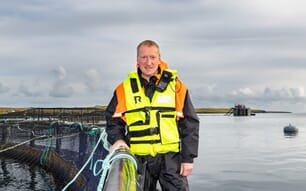At this time of the year, Worldwide Shrimp in Illinois would normally pack 250,000 pounds a day of Gulf of Mexico shrimp. Now, it's getting about 15,000 pounds as a result of the Gulf oil spill. The shrimp are selling at prices 50 per cent higher than this time last year. "It's bad out there," says Worldwide wholesaler John Appelbaum.
Louisiana seafood officials say the brand is getting shunned given the images of soiled water, beaches and wildlife.
"Buyers are concerned," says Ewell Smith, director of the Louisiana Seafood Promotion and Marketing Board. He says Louisiana seafood processors are reporting cancelled orders from buyers nationwide and that more restaurants are posting notices that they're not selling Gulf seafood.
Mr Smith fears that Louisiana's seafood brand, which accounts for 300 per cent of US production, may be harmed for years, as it was after Hurricane Katrina. Even though fishing waters were cleared as clean a month after the hurricane, "It still took us two years to turn around perceptions," Mr Smith says.
Federal and state officials say they've taken steps to keep tainted seafood from the market.
The National Oceanic and Atmospheric Administration (NOAA), which is in charge of federal fishing water closures, deploys a five-mile buffer around oil slicks, says Reid Cherlin, White House spokesman. About 30 per cent of Louisiana and Mississippi state waters, which are closer to shore, are also closed to fishing.
The second line of defense is to test seafood. That includes lab and sniff tests. This week, 20 state officials from five states underwent training in Mississippi to brush up on sniff and taste skills to detect oil on seafood. While rudimentary, sniff tests are "the gold standard" to detect tainted seafood, says LuAnn White, a toxicologist and environmental health expert at Tulane University. The sniff tests can take minutes vs. days for laboratory tests.
"It's an initial screening that is very fast and cost-effective," says Joan Bowman of the International Food Protection Training Institute, which conducted the training in Mississippi.
Since May 6, Louisiana officials have lab-tested more than 6,930 finfish, crab, shrimp and oysters. None have tested positive for hydrocarbons even close to levels that NOAA or the Food and Drug Administration say reach a "level of concern," says Randy Pausina of the Louisiana Department of Wildlife and Fisheries.
Despite concerns, toxicologist Ms White says fish eaters are in little danger. Should tainted products be eaten, she says, people could suffer stomach aches, but the oil isn't highly toxic. Shrimp and other seafood quickly metabolize it, she says.
Ms White says studies after oil spills in Washington and Texas showed increased levels of hydrocarbons in oysters and mussels. But concentrations were so low that someone would have to eat "tons" of them over decades to be harmful.
Dispersants used by BP to break up oil slicks, while posing potential risks to clean-up workers, present even less risk to consumers, White says. That's because the dispersants quickly break down in water, she says.
More seafood testing is likely. BP gave $2 million (€1.6 million) to bolster seafood marketing. Mr Smith says a national advertising campaign is due next week.
In a recent letter to BP, Louisiana officials, including Robert Barham, secretary of the Department of Wildlife and Fisheries, asked BP to consider a long-term testing and certification program. "The future of this industry is in peril," the letter said.
Buyers Concerned Over Seafood Safety In Gulf
US - The oil spill in the Gulf of Mexico is having a severe effect on the seafood industry as consumers confidence drops - confidence which could take the industry years to regain.




